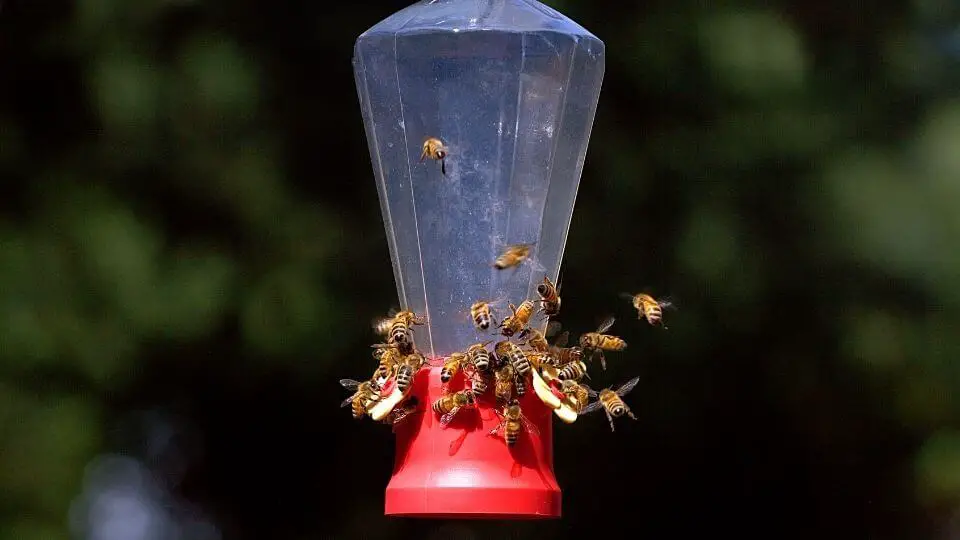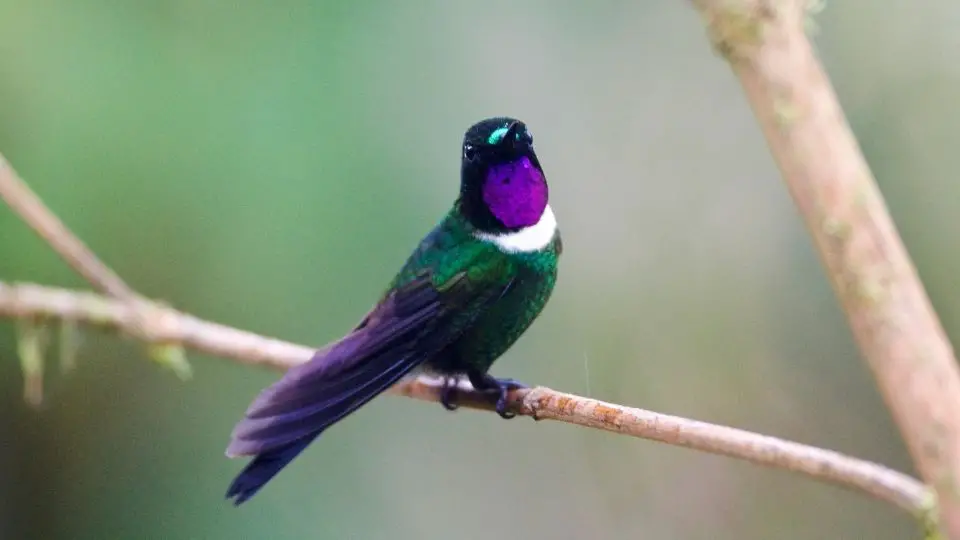As a small and delicate creature, many externals forces can present danger and be frightening, but what scares hummingbirds away the most? Typically predators can present hummingbirds with uncertainty, and thus scare them away.
Since hummingbirds are such small birds, it makes sense that many things can be dangerous to them. So let’s see what scares hummingbirds off the most. All kinds of predators can stand lurking in the distance. Some people want to steer these beautiful jewels away from their garden or do so unintentionally by using pesticides that kill the tiny insects they need for their diet.
Other dangers can be less obvious, like climate change. That’s because they happen in a passive manner, almost unnoticeable. Hummingbird numbers are slowly decreasing (some species are considered endangered), especially during the last few years. It’s good to know all the dangers that await these beautiful creatures, so we can do our best to protect them.
For all the birders that love bird watching these jewels: you can start attracting hummingbirds and make them more comfortable by giving them homemade hummingbird nectar, by planting tubular flowers in bright colors like red and orange (that are perfect for their long tongues), by putting bird baths out, and by landscaping your yard according to their unique needs. Some native plants that you can plant for hummers include white sage, bee balm, salvia, columbine, and fuchsia.
Table of Contents
Dirty Hummingbird feeders
When nectar sits in the sun for a long time, it ferments, spoils, and becomes dangerous for the hummingbird. The most common diseases hummingbirds can get from untended feeders are Candidiasis and Avian poxvirus. You can quickly solve this problem by being vigilant and maintaining your bird feeders in proper condition at all times:
- Change the sugar water frequently- the hotter it gets outside, the more often you have to change the nectar in your backyard bird feeder.
- Clean the feeder at least once a week to ensure there’s no risk of contamination or cross-contamination.
- How to clean a bird feeder: The best way to clean a bird feeder is by using only water, not soap! After soaking the feeder in warm water, you can use a bottle brush to remove any mold or dirt. After rinsing, wait for it to dry.
Climate change
Climate change can have an impact not just on us humans but also on these little creatures. The main effect that climate change has is on hummingbird food. Food sources become more scarce as time passes. These changes can also severely affect migration, which further has an effect on the bird’s migration patterns.
Large praying mantis
While hummingbirds feed on some insects, others can seriously threaten them.
A praying mantis may seem like a gentle and hopeless insect, but did you know that they can eat any prey three times their size? A large praying mantis can eat a hummingbird (and it would be easy for them to eat the smaller ones like the Rufous hummingbird).
A typical predatory behavior from the praying mantis is to sit on top of nectar feeders and wait for other insects like bees and wasps to fly by. Still, on occasion, a giant praying mantis can grab and kill a hummingbird, so it would be a good idea to check on your feeder once in a while and move it around if necessary to keep it out of reach.

Other insects like bees, yellow jackets, and wasps
Hummingbirds are not entirely afraid of bees and will always avoid a colony; but wasps and bees are also dangerous. Although most bees and wasps won’t sting a hummingbird unless they have a good reason to, if they do, the sting can be deadly. Installing a bee guard can help in this case to ensure that hummers can relax when lounging around the feeders.
Big predators like cats or dogs
Your pet might not look like an evil heartless predator to you, but it can be a death sentence for a hummingbird. Cats and dogs can be easily distracted by all the fast and enticing movement of a hummingbird, and can attempt to catch them. Even the colorful display of the bird can be stimulating for them, so preventing your pet from eating hummingbirds or munching on them should be a priority.
Sometimes, being eaten by a predator is more of a matter of whether you have good luck or not. But you can steer away from some of them (for example, when hummingbirds are out and about, spend more time with your pet indoors, at home, or in parks and other public areas). You can also section your garden – by planting more flowers in a sport specially dedicated to these pollinators. Other than that, make sure there are separate areas that provide a different type of stimulation for your pet.
Lack of food sources
Hummingbirds have to eat way more than they weigh! They have a very fast metabolism, and all that hovering around sure isn’t helping to slow it down. Typically a hummingbird is used to visiting about 1800 flowers per day – all for the endless energy that nectar can provide!
So if hummingbirds don’t get enough food into their bellies, they can be at serious risk of dying. A wide assortment of hummingbird flowers in your backyard can quickly solve this problem! You can also encourage your neighbors to make a hummingbird-friendly garden near their houses or backyards too!
Other competitive birds
Perhaps it’s not surprising that other birds or even hummingbirds can hurt other hummingbirds. The most common big bird predators include owls, woodpeckers, orioles, blue jays, hawks, grackles, starlings, and gulls. Some of them tend to roam around hummingbird feeding stations and try to intimidate hummingbirds.
But hummingbirds also attack other hummingbirds. Although some hummingbird species tend to be more aggressive and territorial than others (e.g., the Rufous hummingbird), the truth is that most hummingbirds are very possessive of their space – especially male hummingbirds. So hummingbirds can sometimes end up fighting off other birds by using their beaks and claws.

Insecticides
People have been using pesticides and insecticides forever. And while we can understand why people need them sometimes, it’s best to stay away from them as much as possible. These substances can be toxic for hummingbirds, and killing their primary food source is not a great way to sustain their populations, and overall health.
The good part is that you can replace them with organic or non-toxic substances for your garden. Make sure to do good research and read the reviews when looking at your preferred merchat store.
Cold or hot weather
Hummingbirds can be affected by too high or too low temperatures. If the temperature too high, hummingbirds find it hard to find enough food sources (flowers can dry out) or even hydrate themselves. Not to mention that sugar water can spoil way more quickly if the weather is too hot.
If cold or hungry, their little bodies can’t stand the low temperatures and have to enter a state of torpor where their metabolism and heart rate are significantly reduced. That’s why they usually migrate to other places during the winter. Freezing weather also kills the insects they need for protein.
Spider webs
You might know that females use spider webs in their nest building. Sadly, they can sometimes get caught in them. The same goes for any other hummer. Sometimes these birds also catch other small insects from webs and can put themselves in danger in the process.
There you have it. For such a small delicate bird, there are quite a few things that can pose as a threat to a hummingbird. While they are incredibly resiliant creatures, they are also somewhat fragile, and must be aware of their environment while searching for food.

